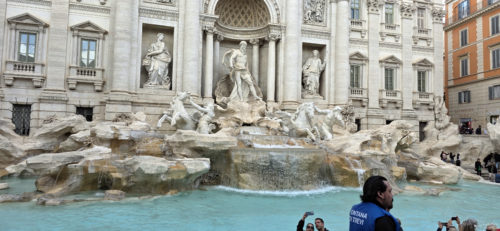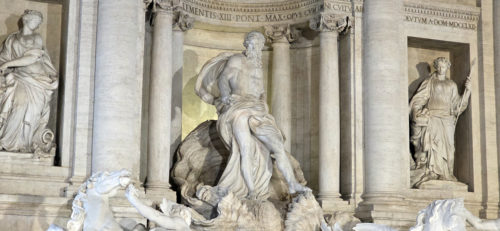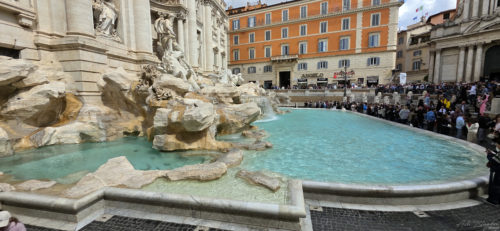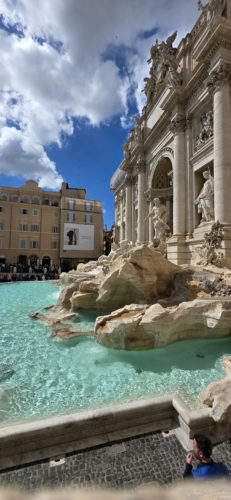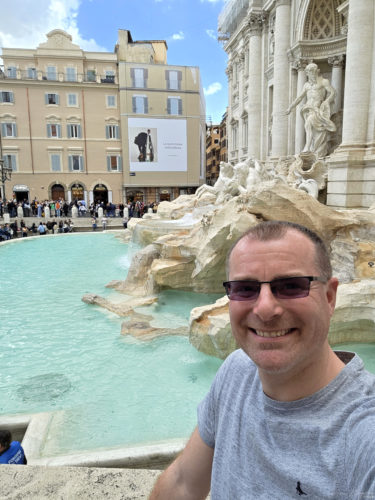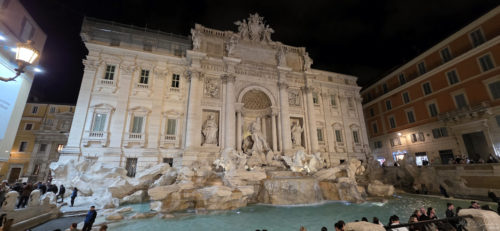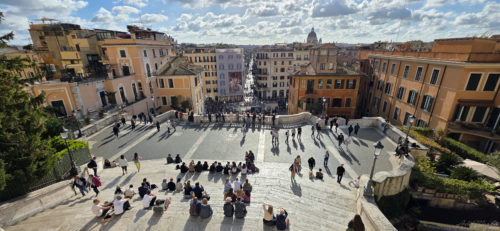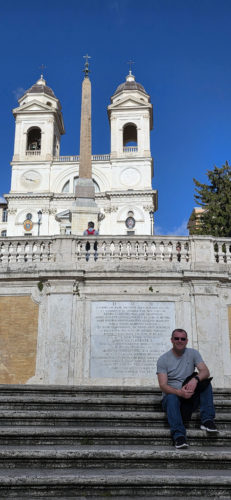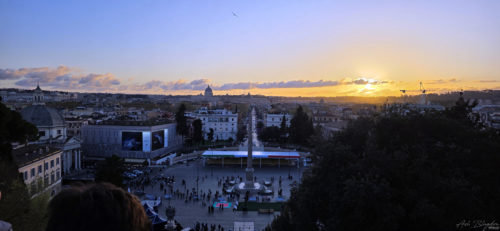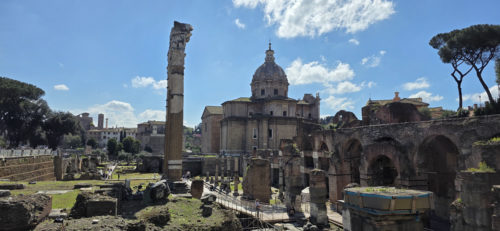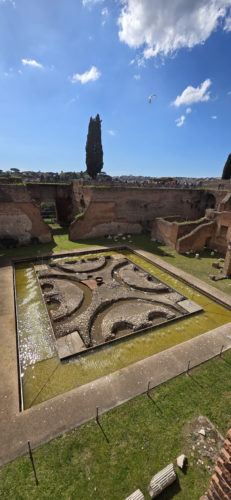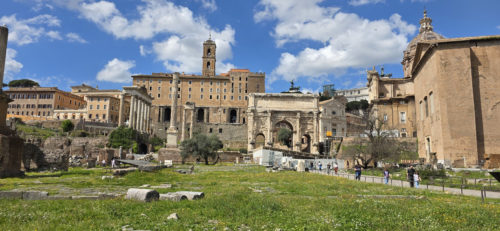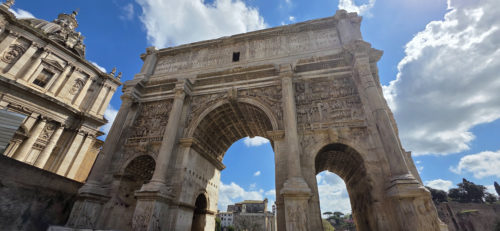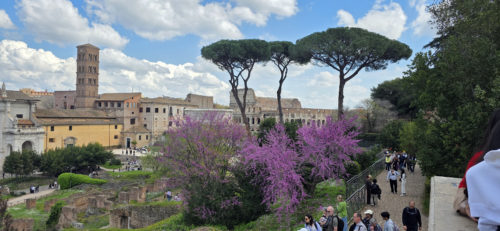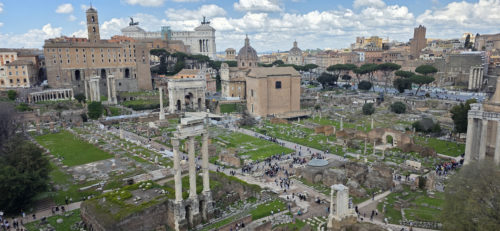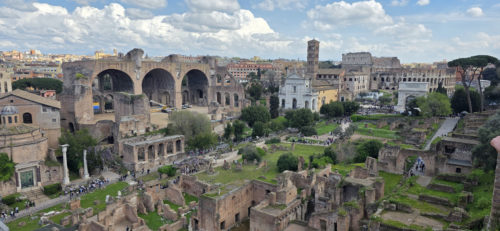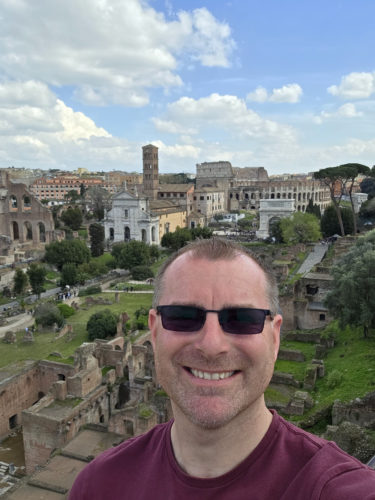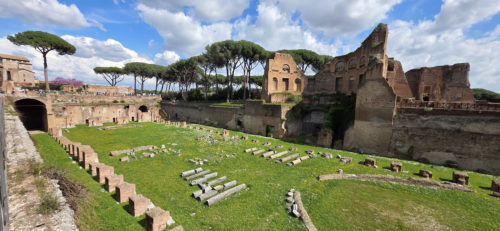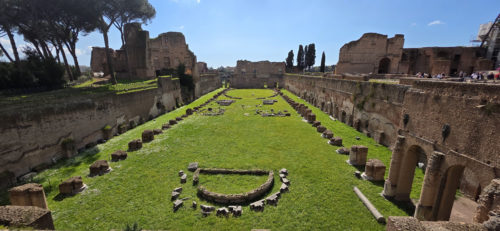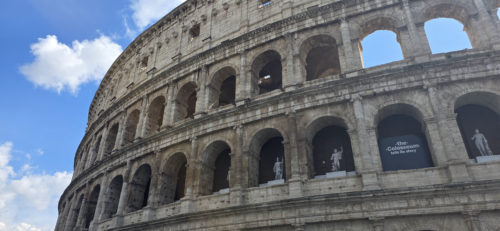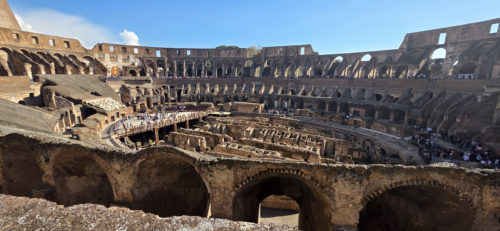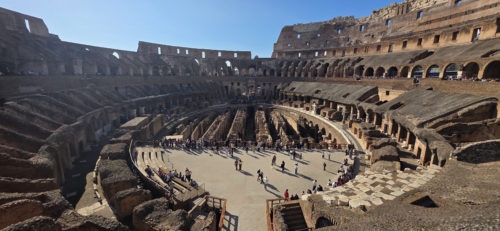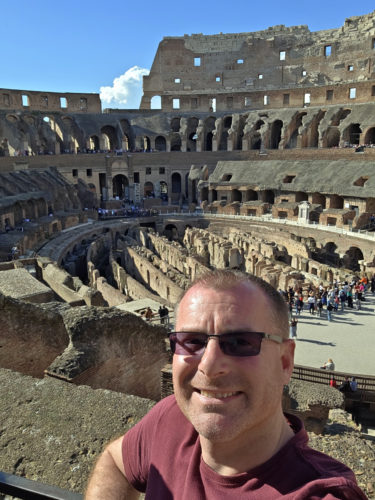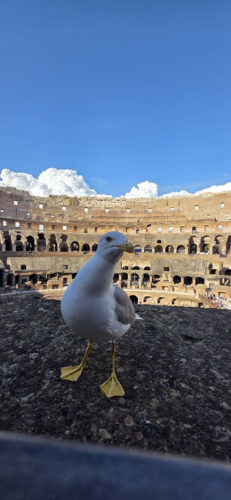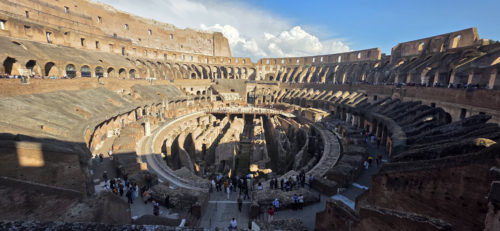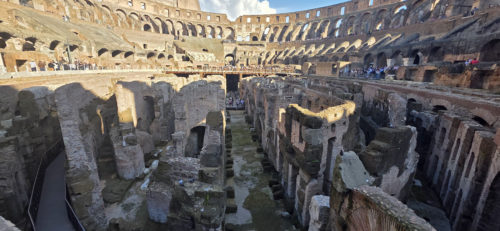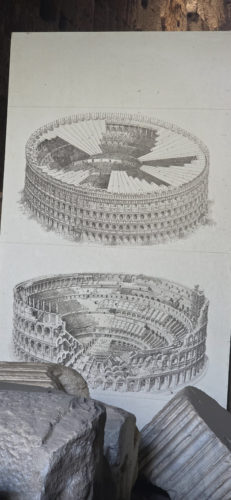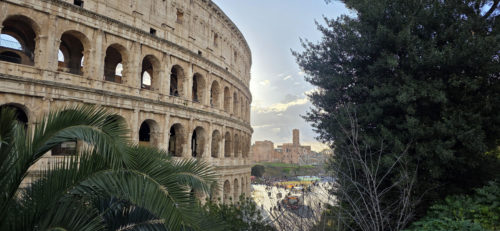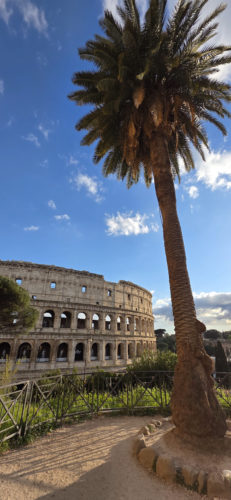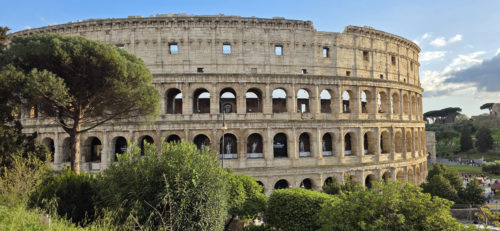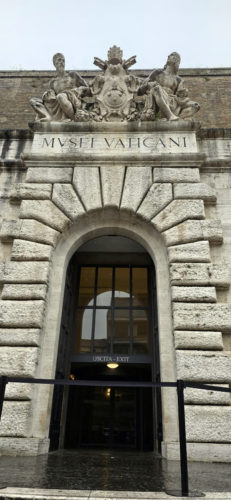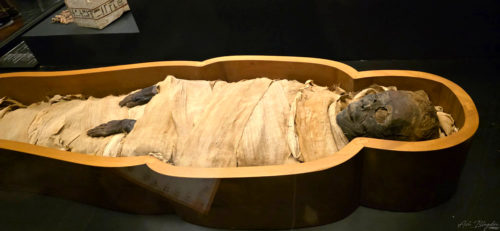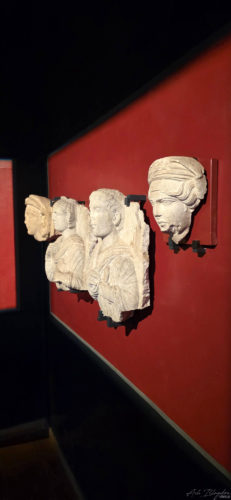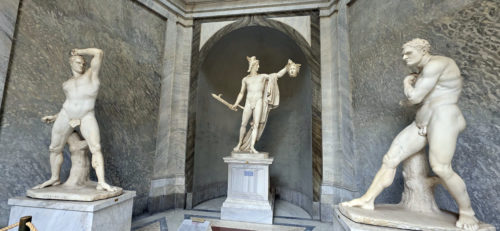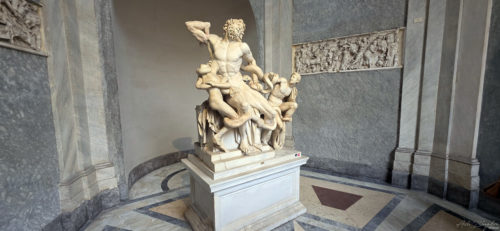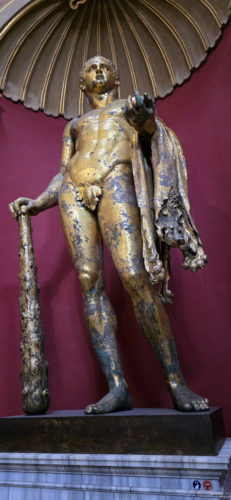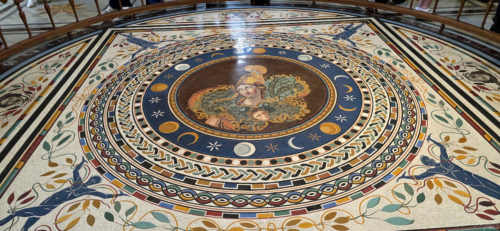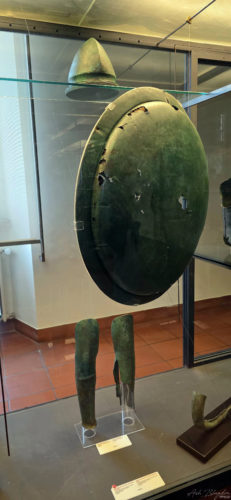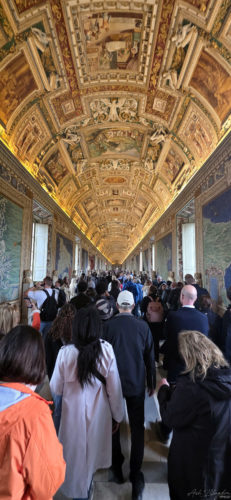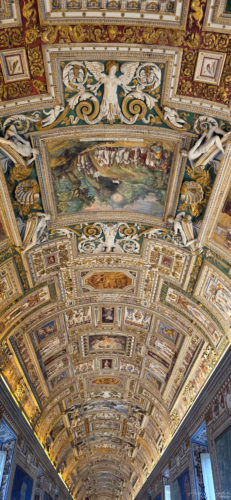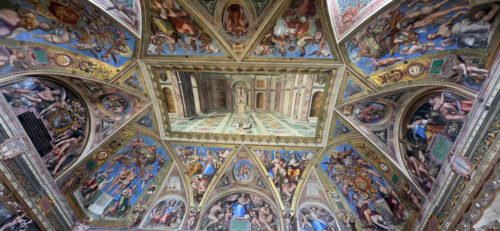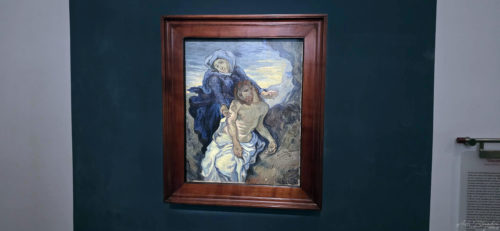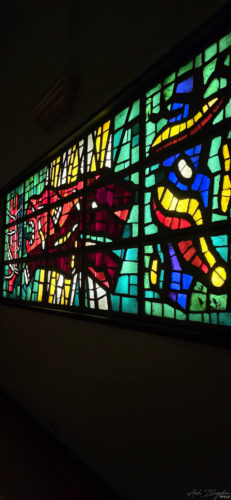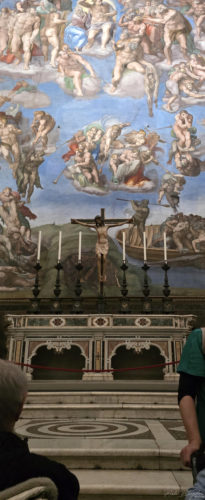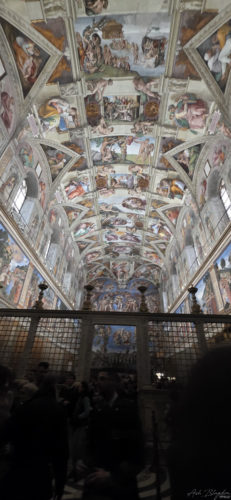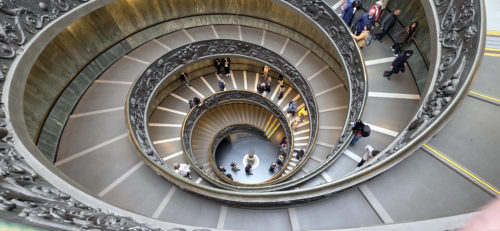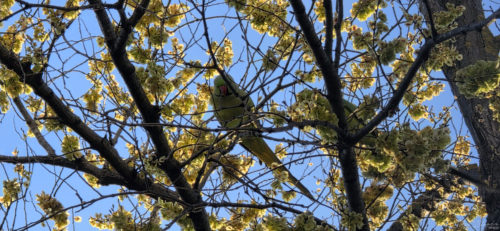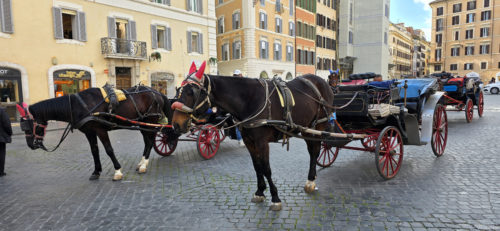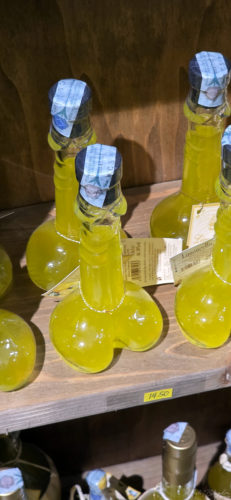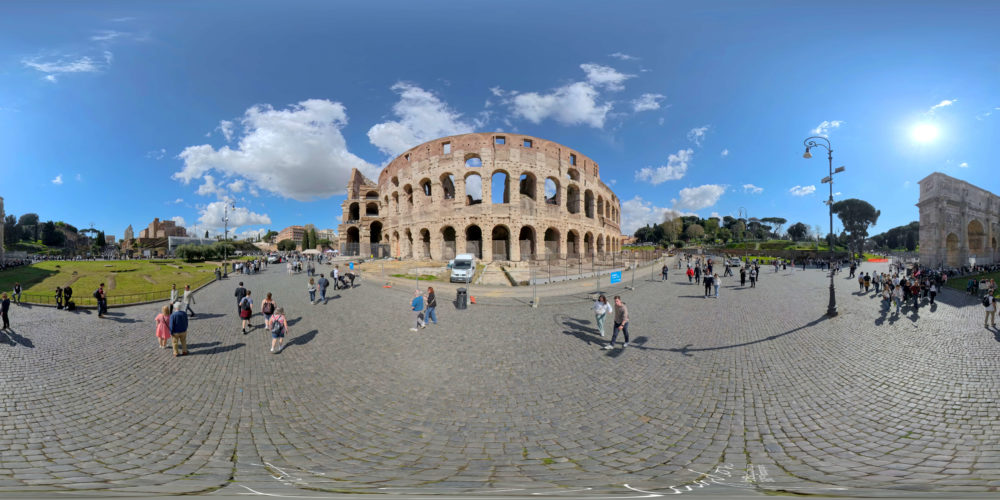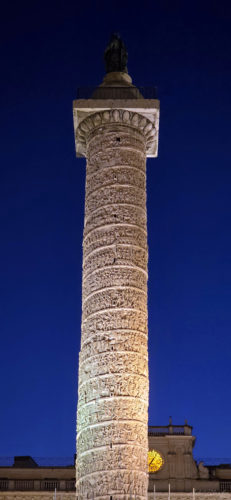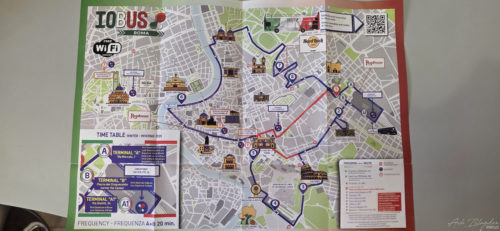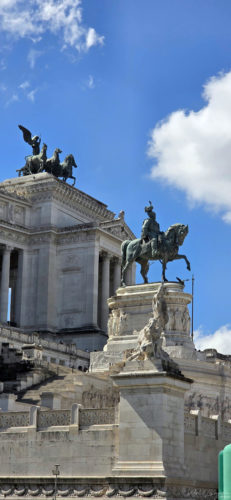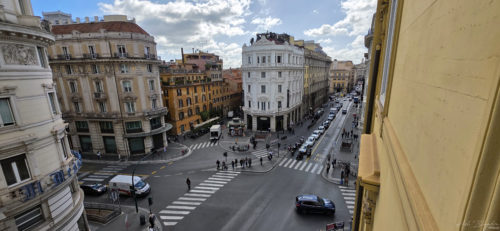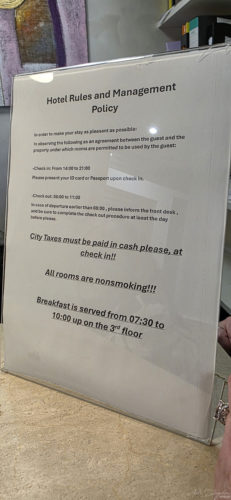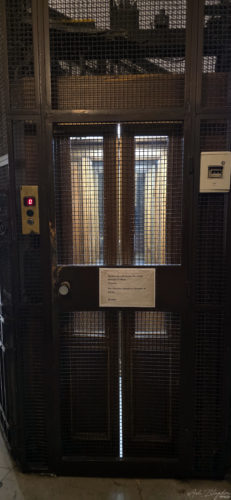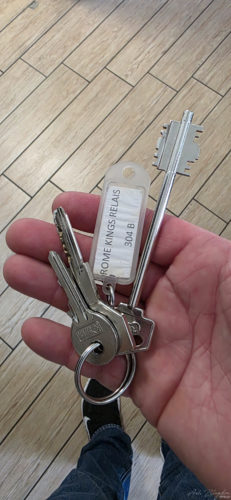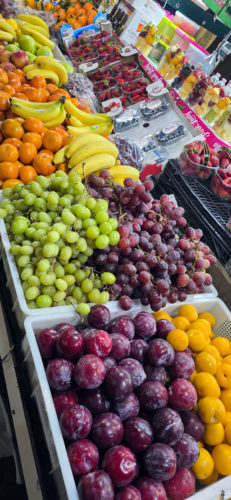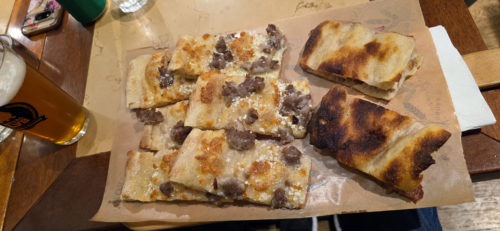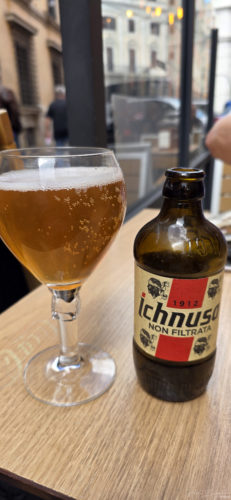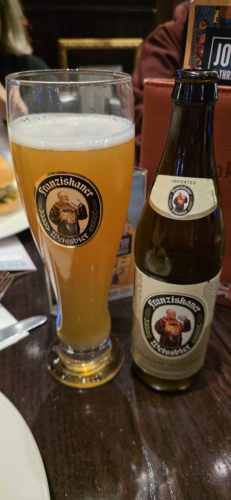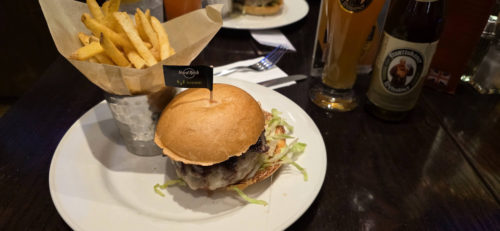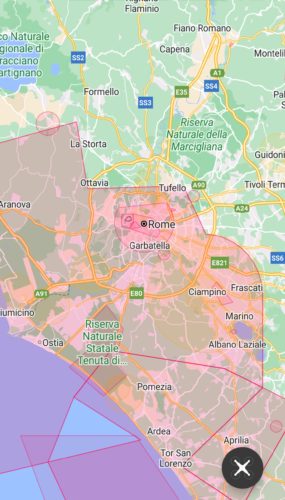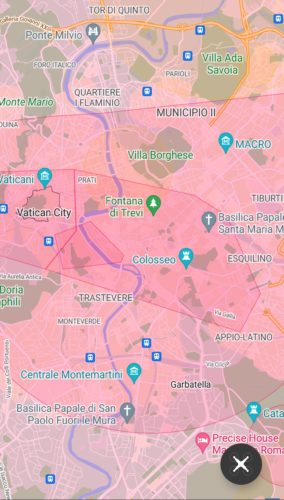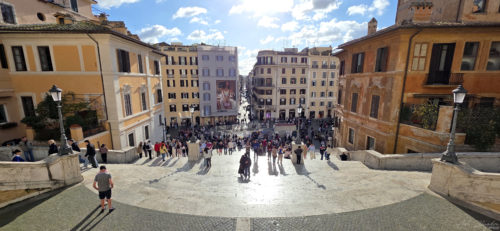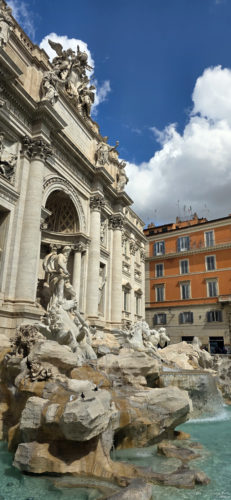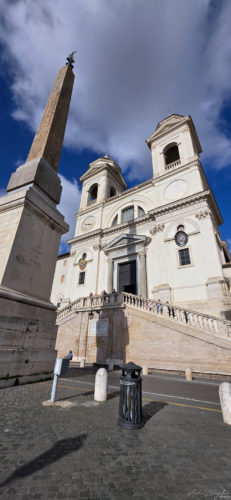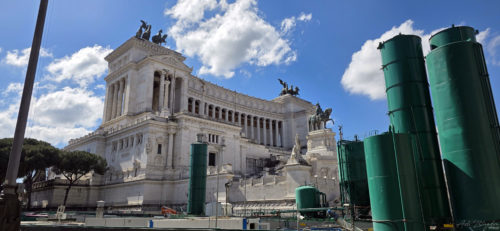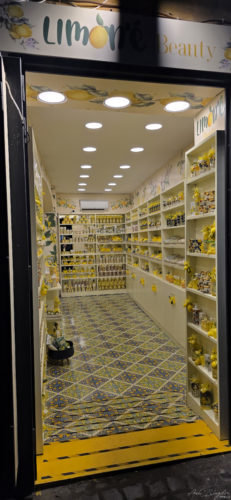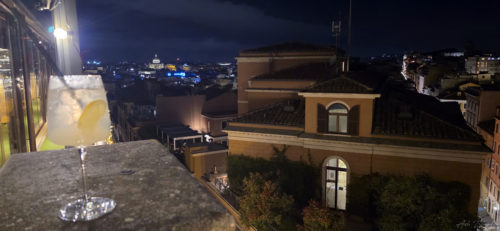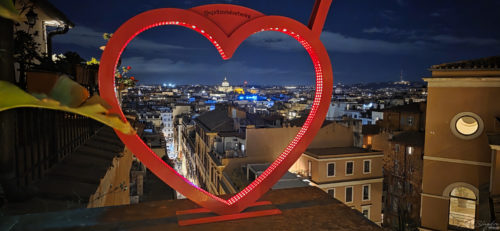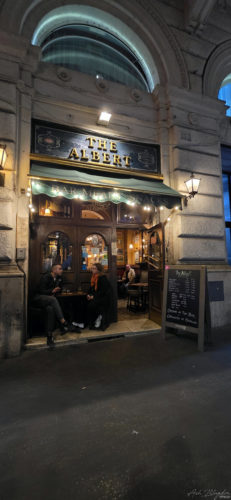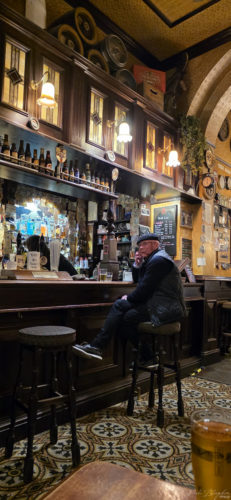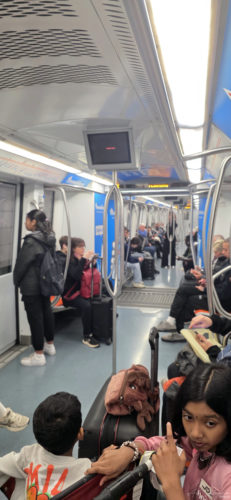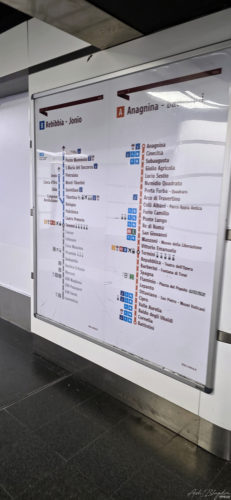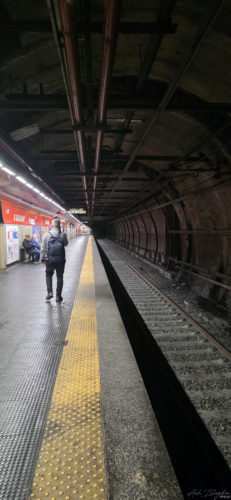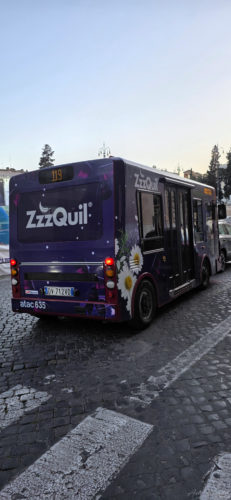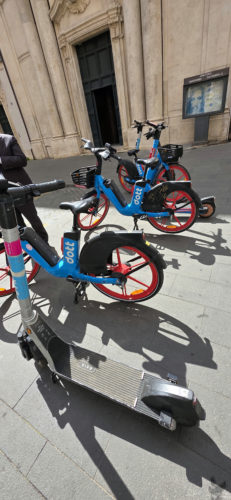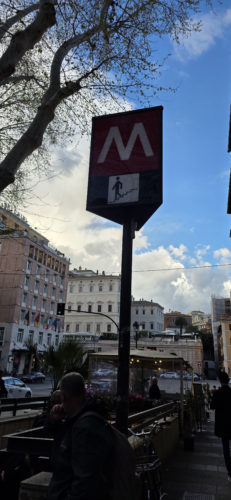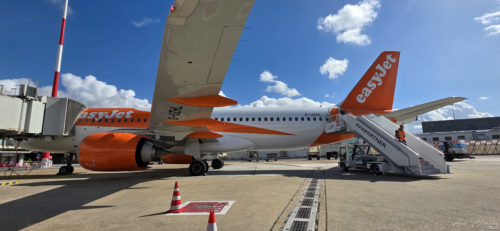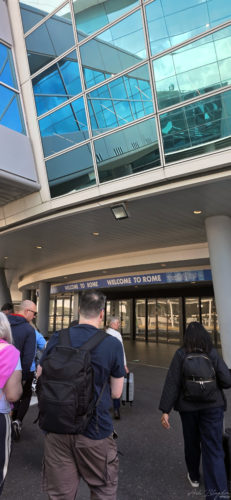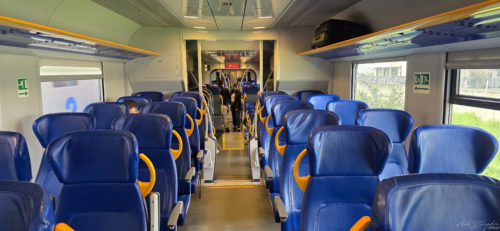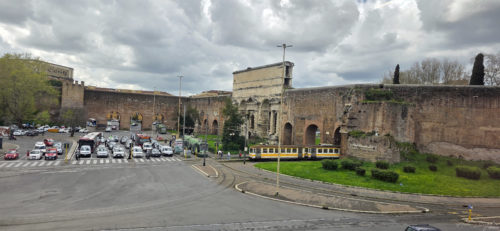Enjoy a 360 virtual tour of Rome bursting at the seams with historic ruins, tons of delicious restaurants, bars, and world-class shopping.
Finally in 2025 I had my first taste of Italy, visiting Rome. Getting into the city was super easy by Leonardo Express train and then switching to the metro to a station across the road from our hotel.
Our hotel wasn’t far from either the Spanish Steps or the Trevi Fountian, so for day 1 we walked around these first. The Trevi Fountain probably the most famous and photographed fountain in Rome, legend has it that whoever throws a coin into the pool will return. It does get busy fast, so if you do want a clear picture without many people around you will need to get there very early. Currently it is free to get close, but you have to queue up for some time and you cannot sit on the fountain wall, if you do you’ll soon have security blowing their whistles at you. I just got to the front of the outside barrier where to be honest you can get better photos anyway.
The Spanish Steps aren’t far away, only a 10 minute walk from the fountain. We found it easier to walk around to the top and then walk down the steps. If you can, get views from both the top and from the bottom. There is often a market in the piazza at the bottom. Just be aware that you’re not allowed to sit on the steps and you will be moved on by security unless you’re quick. You can be fined €400 for disobeying the rules.
Roman Forum & Palatine Hill
Day 2 we walked to the Forum, Palatine Hill and the Colosseum.
Colosseum
One of the Seven Wonders of the World, its sheer scale and architectural ingenuity are truly breath taking, transporting you back to the ancient Roman era thousands of years ago. This amphitheatre once hosted gladiator battles, wild animal hunts, and public executions. Built between 70 and 80 AD, and one of Rome’s most iconic historical landmarks and a true ancient masterpiece of Roman engineering.
The best time to come would either be early morning are late afternoon to avoid the crowds and heat of the midday sun. Outside around the Colosseum there is no cover or hiding from the sun while you queue to get in. They have airport style security gates, scanning you and your bags when you go through. Keep your valuables close. While we were in the queue we saw someone chasing after another at some speed, presumably they had just been pickpocketed or phone snatched. They ran out of sight, so we didn’t see if they managed to catch them and get there stuff back or not.
There isn’t much choice for food and drink in the colosseum, with just a vending machine inside. Also the restaurants surrounding are highly priced with a blood orange juice costing €8, so make sure you take a pack lunch or walk a few streets away where the prices drop drastically.
Vatican City & St Peter’s Basilica
Day 3 we caught the metro to Ottaviano, and it’s just a short walk. Don’t make the same mistake as we did and walk to St Peters Square if you want the Museum and Sistine Chapel. The main entrance is off Viale Vaticano, I’ve pin pointed it on the map below. We queued for around 30 minutes before getting in. This was quick as I’ve been told it can be an hour or more at times, so make sure you have an umbrella and give yourself time to have visited the loo before joining the masses.
Be Aware of Scams
Scams and pickpocketing are incredibly common, especially around major tourist locations. Always keep your valuables secure and out of sight on public transportation and when out and about. Don’t leave your bag open or put your mobile phone in loose jacket pockets and don’t use your phone when the metro doors are open, they’ll grab it and run out just as the doors are closing. The biggest things to watch out for are pickpockets on public transportation and in crowds. While we were at the Colosseum we saw someone chasing after another at some speed, presumably they had just been pickpocketed. They ran out of sight, so we didn’t see if they managed to catch them and get there stuff back or not.
The climate in Rome is Mediterranean and offers mild winters and warm summers. The best time to visit Rome is in spring (March to May) and autumn (September to November), when the temperatures are pleasant and the tourist crowds are not so large. Summers can get very hot, especially in July and August, while winters are mild.
Rome the capital of Italy and the third most visited city in Europe, and 12th in the World. Venice and Florence are among the world’s top 100 destinations.
- Rome is the largest city and capital of Italy, It has a permanent population of around 2.8 million people. Up to 4.2 million people live in the metropolitan area of Rome, which includes the surrounding municipalities.
- Tourists throw €3,000 into the Trevi fountain every day. The coins totalling thousands of euros each day are given to the Red Cross.
- The Trevi Fountain was completed in 1762. At the centre of the fountain stands Neptune (Poseidon), riding a chariot, symbolising the power of the ocean. On the left is Ceres, the goddess of agriculture and abundance, while on the right is Salus, the goddess of health, prosperity, and well-being, protecting the people.
- There are 135 Spanish Steps.
- Rome was built on seven hills, known as “the seven hills of Rome” Esquiline Hill, Palatine Hill, Aventine Hill, Capitoline Hill, Quirinal Hill, Viminal Hill and Caelian Hill.
- There are over 2,000 fountains in Rome.
- Cinecittà Studios in Rome is Europe’s largest film studio.
- Roman cement and concrete are part of the reason ancient buildings like the Colosseum and Roman Forum are still standing strong today. Roman arches, or segmented arches, improved upon earlier arches to build strong bridges and buildings, evenly distributing weight throughout the structure.
- Roman roads, the most advanced roads in the ancient world, enabled the Roman Empire—which was over 1.7 million square miles at the pinnacle of its power—to stay connected. They included such modern-seeming innovations as mile markers and drainage. Over 50,000 miles of road were built by 200 B.C. and several are still in use today.
- Roman hours were counted ordinally from dawn to dawn. Thus, if sunrise was at 6 am, then 6 to 7 am was called the ‘first hour’. Midday was called meridies, and it is from this word that the terms am (ante meridiem and pm (post meridiem) stem.
- Italy is home to two sovereign states, Vatican City and San Marino.
- Spanning just 44 hectares, the Vatican City is around one-eighth the size of New York’s Central Park. This makes it the smallest country in the world.
- Rome has two distinct species: the rose-ringed parakeet, a tropical Afro-Asian bird with red beak that takes over the tree-hole homes of Rome’s woodpeckers and the monk parakeet, a less flashy and more discreet South American variety that builds communal wicker-like nests.
- If you experience an emergency, dial 113 for assistance.
- Time zone in Italy (GMT+1)
- Country Code: +39
- Currency: € (Euro)
From its founding in 625 BC to its fall in AD 476, the Roman Empire conquered and integrated dozens of cultures. The influence of these cultures can be seen in objects, such as oil lamps, made and used throughout the Empire.
- Rome was founded around 625 BC in the areas of ancient Italy known as Etruria and Latium.
- Ancient Rome grew from a small settlement on the River Tiber in central Italy, founded in 753 BC, was ruled for 244 years by a monarchical system.
- In the wake of Julius Caesar’s assassination in 44 BC, Rome grew into a massive empire stretching from Britain to the borders of Persia, engulfing the whole Mediterranean basin, in which Greek, Roman, and other cultures merged into a powerful civilisation. The long reign of the first emperor, Augustus, began an age of peace and prosperity.
- As legend has it, Rome was founded in 753 B.C. by Romulus and Remus, twin sons of Mars, the god of war. Left to drown in a basket on the Tiber by a king of nearby Alba Longa and rescued by a she-wolf, the twins lived to defeat that king and found their own city on the river’s banks in 753 B.C. After killing his brother, Romulus became the first king of Rome, which is named for him.
I stayed at Rome Kings Relais hotel just around the corner from the Trevi Fountain. It was mid range and comfortable. The staff were really friendly and helpful. Breakfast was typical European, croissant, ham cheese or cereal. There was a small charge for city taxes on check in €6 per person that had to be cash. The location was brilliant, just a short walk to the metro in one direction and had the Trevi fountain and Spanish steps just around the corner.
- Airbnb, available everywhere in Rome. Private rooms €60-80 per night, apartments €80-115 per night.
- Hostel, €32-45 per night (€25-35 during the summer). Private rooms €92-170 per night.
- B&B & Guest Houses, €33-70 per night.
- Hotels, €90-140 per night (€10-20 less per night in the off-season). These range from simple two-star to lavish five-star and all-inclusive resorts.
Tip: Stay outside the centre. If you are open to staying on the outskirts of Rome, you can save a lot of money on accommodation. Food outside of the city is much cheaper as well, and it’s easy to take the train to Rome for your sightseeing.
Tip: There will be city taxes on check in. Usually cash only ranging between €4-10.
- Partake in La Settimana dei Beni Culturali (10-day event that occurs every May)
- Festa della Repubblica when the city celebrates the unification of Italy in 1946 (2nd June).
- The Festa dei Noantri happens in the Trastavere neighbourhood with street performers and lots of food and drink (late July)
- Rome Film Festival is in October.
Italian is a Mediterranean cuisine and the key characteristics are its simplicity, with many dishes made up of few ingredients. Therefore Italian cooks often rely on the quality of the ingredients, rather than the complexity of preparation. Rich in pasta, fish, fruits, and vegetables. Cheese, cold cuts, and wine are central to Italian cuisine, along with pizza and coffee (especially espresso) form part of Italian gastronomic culture. It’s not all Pizza and pasta. Romans have been eating offal for centuries. Many restaurants serve it in its traditional forms, while others are mixing things up. Traditional Roman pizza is cracker thin and sparsely topped. If you truly want to experience Rome like a modern Roman, be sure to check out a natural wine bar (or ten).
- Commonly known around the world as spaghetti Bolognese, in its authentic form ‘Ragu alla Bolognese’ is recognised as the national dish of Italy.
- A typical Italian breakfast usually consists of a sweet pastry like a croissant (called “cornetto” in Italian), often accompanied by a cappuccino, with other popular options including yogurt, fruit, biscotti, and sometimes a slice of “fette biscottate” (a type of rusk) with jam or hazelnut spread; the focus is generally on light, sweet foods and strong coffee.
- Street food €4-8. Try the Suppli (aranchino ball) and Trapizzino (pizza sandwich).
- Sit-down restaurants €15-30.
- Beer €4-5.
- Glass of wine €3-5.
- Cappuccino/latte €1.50.
- Bottled water €1.
Tip: When eating out ask for free tap water or you will automatically get expensive bottled water included on your bill.
Tip: Some restaurants charge you extra for bread they leave on the table. You won’t know until the bill arrives. Send it back if you don’t want to be tempted.
Tip: Roman pizza has a thin, crispy base compared to the deep dough of a Neapolitan.
Tip: If many dishes have an asterisk after them, hightail it out of there. Asterisks in Italy mean that one or more items are frozen.
To legally fly a drone in Rome (and Italy), you need to register as an operator with the Italian Civil Aviation Authority (ENAC), maintain a direct line of sight, and adhere to specific altitude and distance restrictions, including staying away from crowds and congested areas.
- Unfortunately pretty much the entirety of Rome is a no fly zone.
- If your drone weighs less than 250 grams and is equipped with any sensor (i.e. camera): no remote pilot certificate will be required for operations in the OPEN category as per EU reg. 2019/947,
- Registration on d-flight website will be required (in case you are at the same time pilot and operator) a liability insurance is required.
- Police checks are very frequent and the penalties are very severe in Italy you have to pay fines and it is possible that they will take your drone if you fly without permission.
- Italy drone laws.
- Colosseum
- Forum and Palatine Hill
- Vatican City
- Trevi Fountain
- Trastevere (great food to be found here)
- Ostia Antica
- Pantheon
- Papal Audience at the Vatican
- Spanish Steps
- Castel Sant’Angelo
- Catacombs
- Take a cooking class
- Roman Appian Way (finished in 312 BCE and it’s so well preserved you can see the ruts in the stones left by chariots).
- Roman Forum
- Park of the Aqueducts
- Piazza Navona
- Centro Storico
- Gianicolo (or Janiculum) Hill offers the best views over Rome. Pepare for the cannon firing at noon (it has been happening daily since 1904).
- St. Peter’s Basilica (Climb the Dome)
- Capuchin Crypt
- Piazza Campidoglio
- Trojan’s Market Ruins
- Baths of Caracalla Ruins
- Villa dei Quintili Ruins – Archaeological Park of Appia Antica
- Mausoleum of Augustus Ruins
- Pyramid of Caius Cestius
- Madonna dell’Archetto (Smallest Church in Rome)
- Giardinetto del Monte Oppio
- Santa Maria in Cosmedin (Mouth of Truth & the skull of Saint Valentine)
- Colossal Statue of Constantine I
- Fontana dell’Acqua Paola (Secret garden behind the fountain)
- Basilica of San Clemente Ruins
- Giardino delle Cascate (Waterfall Gardens)
- Mercato Rionale Monti (Market)
- Campagna Amica Market
- Aventine Keyhole (Perfectly framed view of St. Peter’s Basilica)
- Stadio Olimpico
- Terrazza delle Quadrighe (Glass elevator to the top for a captivating bird’s-eye view of Rome)
- Piazza della Trinità dei Monti (Jaw-dropping views of Rome)
Tip: Most of the museums and other sights are free on the first Sunday of every month. This includes the Colosseum, the Forum, the Pantheon, and many more of the iconic sights. Though you won’t be able to see it all in one day, you can save a lot by visiting a few major attractions then. On the last Sunday of the month, the Vatican Museums are free. Just expect crowds!
- Trastevere neighbourhood
- Fatamorgana (Unique flavours, the tobacco chocolate was featured in the New York Times)
- Pinsere, on Via Flavia. (reccomended Pizza)
- Big Star in Trastevere. (Burgers, curries and great craft beer)
- Drink Kong (Voted in top 50 cocktail bars in the World)
- Freni e Frizioni (Voted in top 50 cocktail bars in the World)
- 180grammi in Centocelle. (Probably will need to book)
- Seu Pizza Illuminati (deviates from the traditional Roman crust by inflating it to a Neapolitan-style)
- Cielo Terrace (Roof Top Bar)
- Mercato di Testaccio (Wander the stalls, which have some of the best street food in the city)
- Ma Che Siete Venuti A Fà. (Great little craft beer bar)
- SETTIMO ROMAN CUISINE ANDTERRACE (Roof Top Bar)
- Adèle Mixology Lounge (Roof Top Bar)
- All’Antico Vinaio (Sandwich shop)
- Dar Filettaro (Baccala’ (Battered cod)
- Barretta Pesce e Porchetta (Spit hog roast sandwich)
- Panificio Bonci (Some insane pizza and some unusual ingredients. Expensive but well worth it)
Tip: Ritual Lab – all around great beer.
Tip: Hammer – deliciously clean hoppy beer.
Tip: Extraomnes – Belgian style.
Rome has an extensive public transportation network consisting of buses, a subway (metro), trams, and trolleys. We bought the Turbopass, but to be honest it wasn’t worth it. Especially if your only there for a few days. We went to the office to grab the transport passes, but they failed to inform us that the QR codes on the Turbopass app wasn’t the entry tickets for the attractions. The QR codes need to be scanned by the Turbopass offices then they hand you the proper ticket. We should have just asked for all the attractions to be printed at once when we first went there. We didn’t realise this until we tried to get into the holy angel after being at Vatican City most of the day. We made it an hour before last entry, but were told our QR codes weren’t entry tickets and there should be a tent outside with the turbopass people. However when we went outside we were told they had packed up and gone home early, so we didn’t get in and didn’t want to pay again.
- Bus, The bus can get you into the areas not covered by the metro system, but it’s a lot slower than the subway due to constant traffic jams. Tickets are €1.50.You can purchase a one-day pass for unlimited travel for €7 or a two-day pass €12.50. A one-week pass costs €24.
- Car, The traffic in Rome is absolutely terrible so I would avoid renting a car here.
- Cycling, there are bike lanes around the city centre that make it possible. Bike rentals start around €9-16 per day.
- E-Bikes/scooters, explore the city on electric scooters through sharing services from companies like Bird, Dott, and Lime.
- Taxi, Taxis are very expensive with the meter starting at €4.50 and then increasing €1.45 per kilometre. Probably best to avoid them!
- Uber, prices are usually cheaper than taxis, however they’re still not cheap so avoid these to.
- Metro (Train), the fastest way to get around the city. There are three metro lines (A to C) (Line C is still largely under construction)
- The metro runs every day from 5:30 am to 11:30 pm (1:30 am on Saturdays)
- Children up to 10 years old travel for free when accompanied by a paying adult
- Do remember to stamp your ticket (you do this yourself on the buses and trams), or you risk a fine
- Roma Pass
With the Roma Pass you can make unlimited use of the ATAC public transport for 48 or 72 hours. You also have access to one or two attractions (including the Colosseum, Castel Sant’Angelo and Galleria Borghese). After booking you can easily pick up this ticket at the airport. The prices of the Roma Pass are:
- 48 hours €36.50 including 1 attraction.
- 72 hours €58.50 including 2 attractions.
- Rome City Pass (Turbopass)The Rome City Turbopass is valid for 1 to 7 days and gives you access to various museums and attractions. This new tourist card is especially interesting if you are staying in Rome for a longer period of time. The hop on hop off bus is included (48 hours) and as extra option you can add public transport tickets.
Tip: The Roma Pass or the Turbopass does not include access to underground areas of Colosseum or the Catacombs. You have to book a separate ticket
Tip: Don’t use your phone when the metro doors are open, They’ll grab it and run out just as the doors are closing.
I flew into Rome from Bristol with EasyJet which was a 2 hour 30 minute flight. The best way to get to Rome from the airport is by taking the Leonardo Express train which is a direct, non-stop service from Fiumicino Airport to Roma Termini station, the central train station in Rome, making it the fastest and most convenient option. It’s in the same building as the airport, you just have a 5 minute walk from plane to train. You will need to buy yourself a ticket from one of the machines which was easy, although they only had 1st class available which was still only €14 each.
- Bus, Cheapest option, around €7. Takes 50 minutes and buses run approximately every hour.
- Shuttle Bus, This can be included in the Rome City Pass. Pre-book your Rome Travel Card.
- Taxi, Comfortable but expensive, costing €50-€60.
- Train, around 30 minutes to reach the centre of Rome and run every 15 minutes.
Tip: Taking the Leonardo Express from the airport to get into Rome is the easiest way.
Tip: There’ll probably be a queue at the first train ticket machine. Don’t worry, carry on walking, there are more at the airport exit and more as you walk into the train station.
Tip: If you do take a taxi ask for a fixed price before jumping in, so you don’t get scammed.
- There’ll probably be a queue at the first train ticket machine. Don’t worry, carry on walking, there are more at the airport exit and more as you walk into the train station.
- The metro runs every day from 5:30 am to 11:30 pm, 01:30 am on Saturdays.
- There will be city taxes on check in. Usually cash only ranging between €4-10.
- Beware of Pick pockets. Don’t use your phone when the metro doors are open, They’ll grab it and run out just as the doors are closing.
- Opt for comfortable, smart casual style, modest attire with neutral colours, while considering that you might need to cover shoulders and knees when visiting religious sites like the Vatican.
- Avoid wearing very short skirts, low-cut tops, or overly tight clothing. Gym clothes or running shorts are not considered appropriate for most situation. Avoid loud colours or patterns and uncomfortable shoes: High heels or flip flops might not be the best choice for all walking.
- Of the museums and other sights are free on the first Sunday of every month. This includes the Colosseum, the Forum, the Pantheon, and many more of the iconic sights. Though you won’t be able to see it all in one day, you can save a lot by visiting a few major attractions then.
- Colosseum is closed first Sunday of each month.
- You need a guided tour to access the underground areas of the Colosseum.
- Request Papal Audience at the Vatican tickets here.
- Vatican is closed on Sundays. Except the last Sunday of the month, the Vatican Museums are free between 09.00 and 12.30, leaving by 14.00. Expect crowds!
- Observe the dress code for visiting the Vatican and wear clothing that covers your knees and shoulders, otherwise you may be refused entry.
- The number of coins thrown in the Trevi Fountain signifies the type of wish: one coin means a return to Rome, two coins represent success in career or studies, and three coins are linked to love. Single visitors wishing for marriage, and married visitors wishing for divorce. This long-standing tradition is still a must-do ritual for tourists today.
- Since August 2019, the Roman government has prohibited tourists from sitting on historical monuments, including the Spanish Steps. The use of rolling suitcases, folding chairs, and similar items is also banned. Violators may face fines of up to €400.
- Roman pizza has a thin, crispy base compared to the deep dough of a Neapolitan.
- If many dishes have an asterisk after them, hightail it out of there. Asterisks in Italy mean that one or more items are frozen.
- Stay outside the centre. If you are open to staying on the outskirts of Rome, you can save a lot of money on accommodation. Food outside of the city is much cheaper as well, and it’s easy to take the train to Rome for your sightseeing.
- Some restaurants charge you extra for bread they leave on the table. You won’t know until the bill arrives. Send it back if you don’t want to be tempted.
- If visiting in the summer, wake up early to beat the heat and the crowds.
- If you experience an emergency dial 113 for assistance.
| Mon | Tue | Wed | Thu | Fri | Sat |
| +15° | +17° | +17° | +18° | +17° | +16° |
| +6° | +6° | +7° | +8° | +8° | +11° |
If you found this helpful, please like and follow my social pages
Click here to Explore More of the UK in 360º
Originally Publish on: 11 March 2025 at 19:29
